The Mercedes 500E Is the Greatest Benz Porsche Ever Built
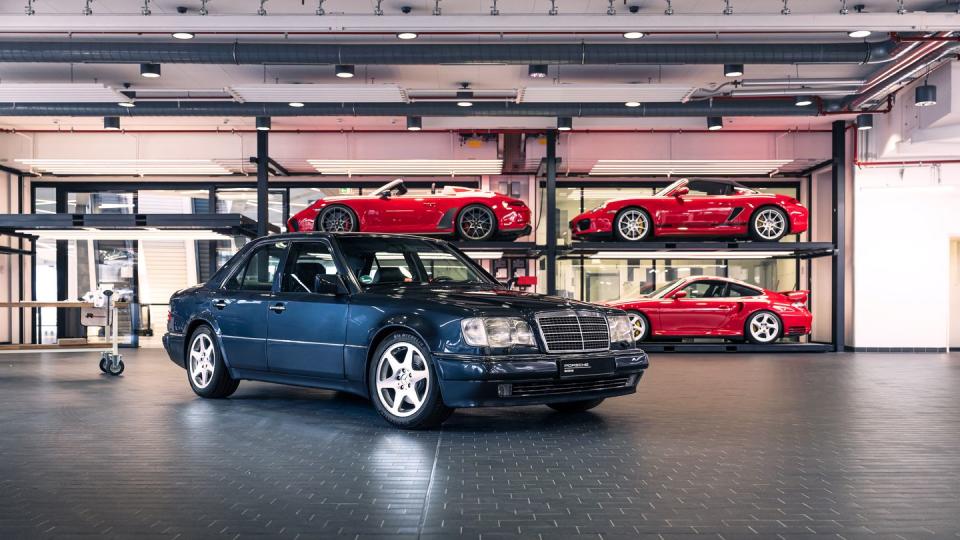
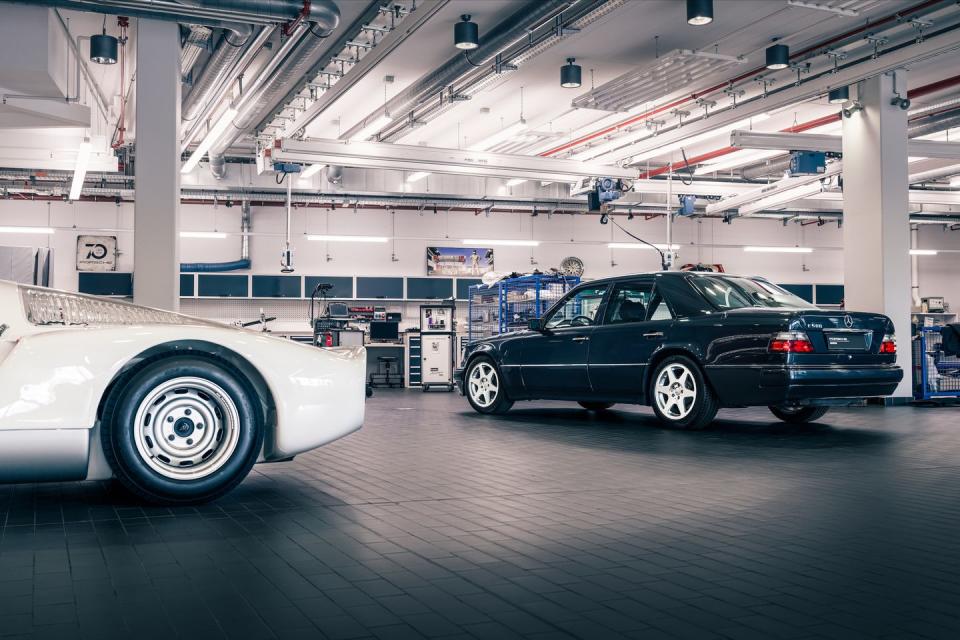
History is written by the victors; so are most autobahn stories. Yet, my abiding memory of Mercedes’s epoch-defining sport sedan came as an onlooker rather than a driver. A couple of years back, I was driving on an unlimited stretch of the A5 autobahn south of Frankfurt late on a summer evening. I’d rented a base Volkswagen Polo, which was incapable of any high-speed adventure itself. But I had a great view as fast movers streaked past.
Almost all of them were expensive late-model cars. But one wasn’t. A glance in the Polo’s rearview mirror delivered the unexpected sight of older halogen headlights closing at a significant pace. Seconds later, a W124-generation 500E streaked past at a speed that sent the Polo rocking in its wake, the Merc either close to or hard against its 155-mph limiter. It was a 30-year-old performance car still being driven as its creators intended.
Many cities are riven by deep rivalries, and although Stuttgart doesn’t have a sporting enmity to match that between the Mets and the Yankees, it does possess two automotive home teams, Mercedes and Porsche. These days, employee numbers and even sales volumes have grown closer, but back in the late Eighties, Mercedes was big and successful, and Porsche was small and struggling. The situation led to the joint parentage of the Mercedes 500E.
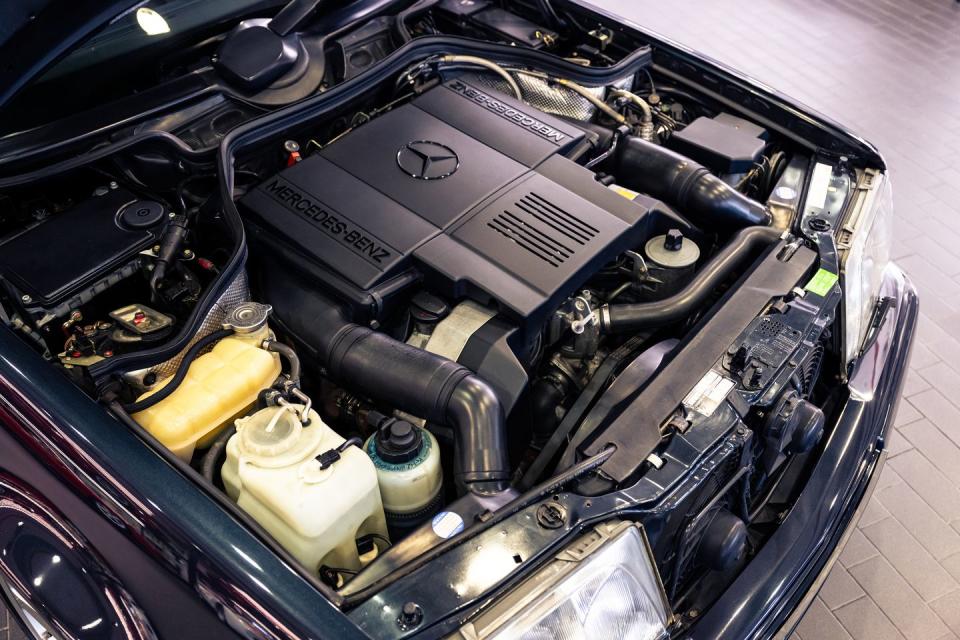
The 500E is all Mercedes. Every component carries one of the company’s parts numbers. But Porsche was contracted to engineer and build it. These days, both companies are equally proud of it; the car photographed for this story belongs to the Porsche Museum.
The W124 E-class launched for 1986 to critical and sales success but without any performance variant. Mercedes had already found success for a turned-up version of the smaller 190E with a Cosworth-designed 16-valve engine, so trying something similar for the E-class made sense, especially as future subsidiary AMG was already creating an aftermarket V-8 version. “BMW was in the market with the M5, and AMG had the Hammer,” remembers Jürgen Berghus, a young engineer at Mercedes in 1988, now 65 years old and recently retired. “So we decided to try to implement a V-8 engine.”
Before that, there was brief consideration of using a twin-turbo six-cylinder, but a prototype engine proved unsuitable. “The biturbo was very digital,” Berghus says. “It was one or zero, all or nothing.” Instead, the E-class would get the contemporary 500SL’s 5.0-liter M119 32-valve V-8, which could be squeezed into the W124’s engine bay with slight surgery. Mercedes had built prototypes, but it lacked the resources to make a production version, with its engineers flat out on the 1990 R129 SL roadster and 1992 W140 S-class.
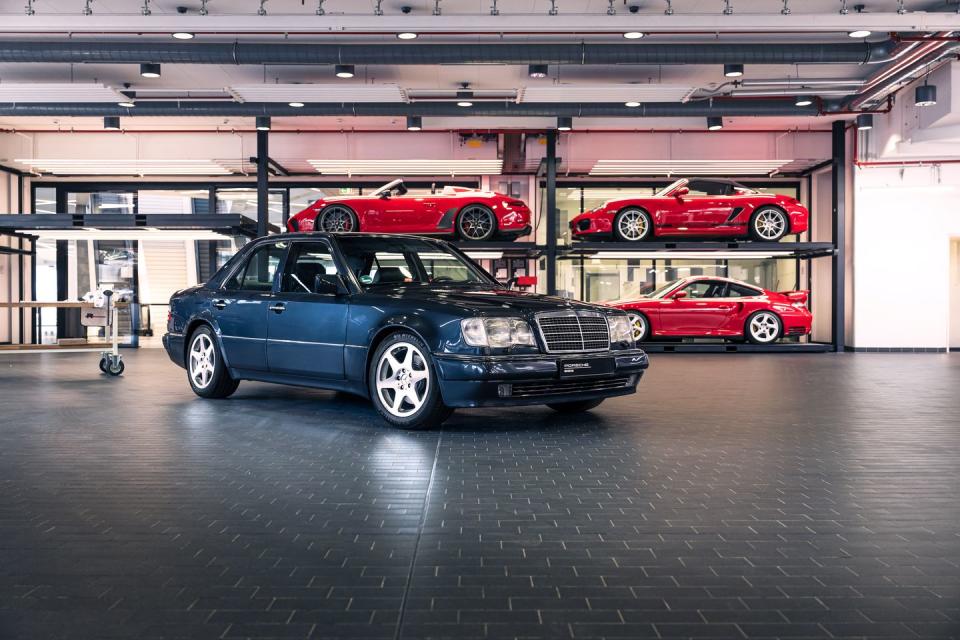
Enter Porsche. The sports-car maker’s contract-engineering division was one of the few parts of the business that was still doing well. “It was a time of crisis at Porsche,” says Michael Hölscher, now 68 and retired, one of the company’s engineers for hire at the time. “The production numbers in Zuffenhausen had decreased from 80,000 to 18,000, so it was very good news that Mercedes gave us this job. It was not the only component in Porsche staying alive, but it was a very good brick in the wall.” Hölscher had just finished a GM project and went to work on the 500E. Mercedes had set all the core targets. Berghus shows an internal document from 1987 that stipulated a 250-km/h (155-mph) top speed, the figure that BMW and Mercedes had agreed to limit their most powerful cars to.
While the regular W124 E-class was a spectacular piece of engineering and is widely regarded as one of the pinnacles of Mercedes quality—even now, some still work as taxis in parts of the world—it was no sport sedan. Mercedes designed it for comfort and refinement. As launched, the most powerful version had 177 hp. The new car would need more than 300 hp to deliver on the performance targets.
The Porsche Museum’s 500E becomes a demonstration tool at this point, with Berghus and Hölscher happy to school me on the many differences between it and the regular E-class. One of the cleverest is effectively invisible, with the need to feed cold air to the engine stymied by the requirement for much larger radiators that would entirely fill the space behind the grille. Instead, the design team took advantage of the high-pressure area at the front of the car and created ducting behind the headlights, with more than enough air flowing through the gaps around the lights to feed the engine. Peaks of 322 hp and 354 lb-ft might look slight by modern standards, but they were enough to make the 500E one of the fastest sedans in the world, even though the four-speed automatic gearbox (chosen because the company’s five-speed unit couldn’t handle the torque) meant the engine would be running close to max revs at top speed.
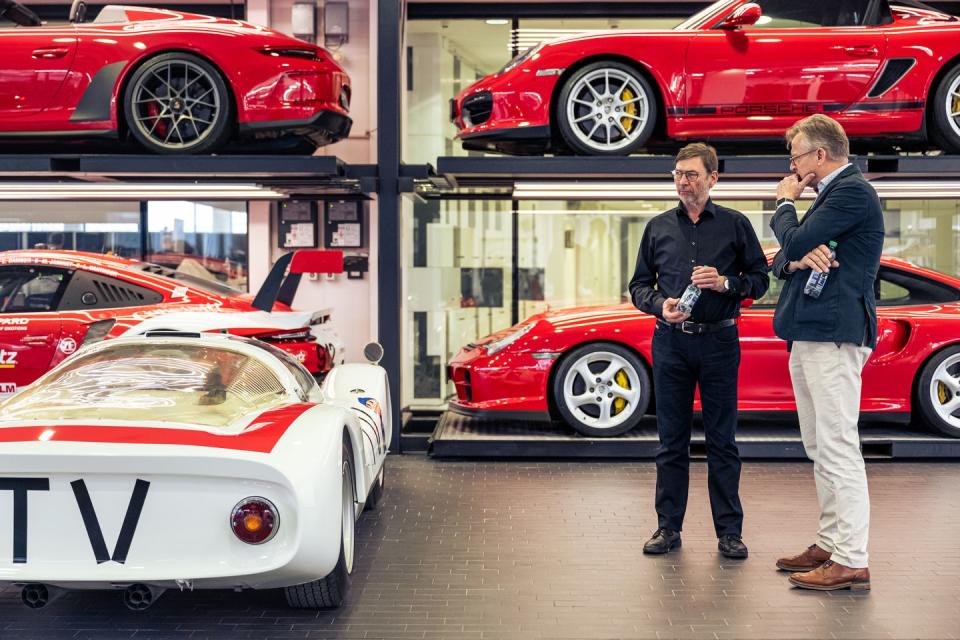
There are numerous other chances to geek out over details. The 500E has double reinforcement struts between the front upper crossmember and the front crash bar (the regular W124 E-class has one), ordered after the test team discovered slight hood vibration while going flat out.
With the car raised on a ramp in the museum workshop, there’s also the chance to see the strengthening brace between the two front suspension arm mountings and the relocated steering rack. The larger rear differential also required a raised rear floor—the reason the 500 is a four-seater and couldn’t be ordered with a bench in the back. It got a bigger 23.8-gallon fuel tank to give realistic autobahn range.
The most significant difference from the lesser E-class was the one that defines the 500E’s visual appeal: the widened front fenders that cover the expanded track deemed necessary to sharpen handling and improve stability. The total difference is only 2.2 inches over the standard car but still enough to mean that the 500 would not fit down the assembly line in Merc’s Sindelfingen plant. It’s hard to imagine a modern automaker allowing such a concession, especially as Mercedes also introduced the narrower V-8-powered 400E that it built itself. But in those days, Benz’s engineers outranked its accountants.
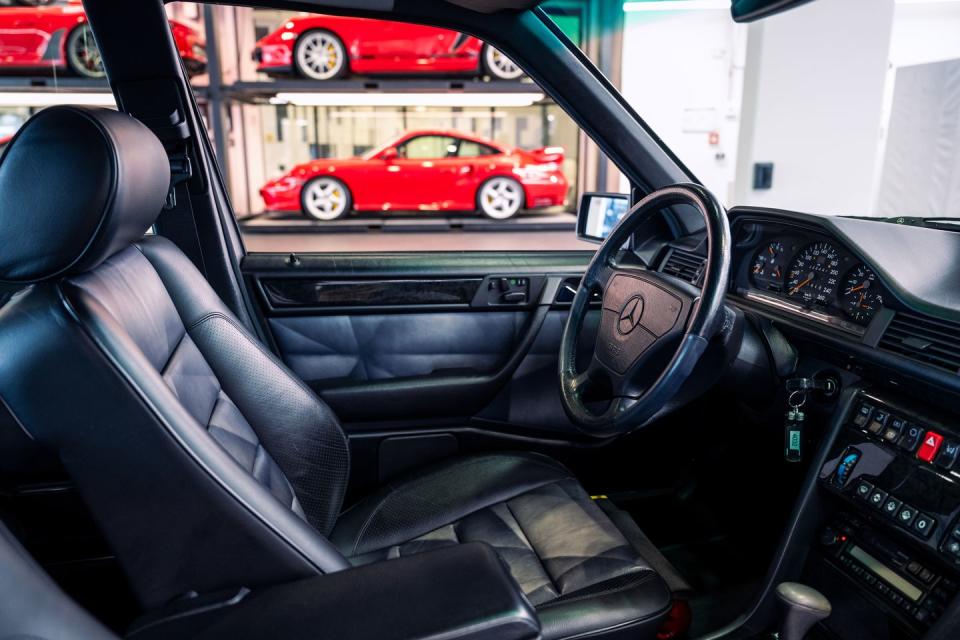
Porsche built the wider 500E body shells at its Zuffenhausen plant. From there, they got shipped to Sindelfingen to be painted, as Porsche’s paint shop could only work with zinc-plated steel. Bodies then returned to Zuffenhausen for final assembly; the process took 18 days for each car. Completed 500Es had to pass quality-assurance tests from both Porsche and Mercedes before going to customers.
The finished car had more speed and dynamic precision than the regular W124, but the changes had not turned it harsh or aggressive. The surprises for anybody driving a 500E today are how muted the V-8 is under gentle use and how pliant its ride is. Nor is the 500E a hooligan—it was one of Mercedes’s first cars with standard ASR traction control. The company was so proud of the system that it denied drivers the chance to switch it off.
The base price in 1992 was $81,800, the equivalent of roughly $180,600 today. The 2023 Mercedes-AMG E63 S is a relative bargain at $113,950.
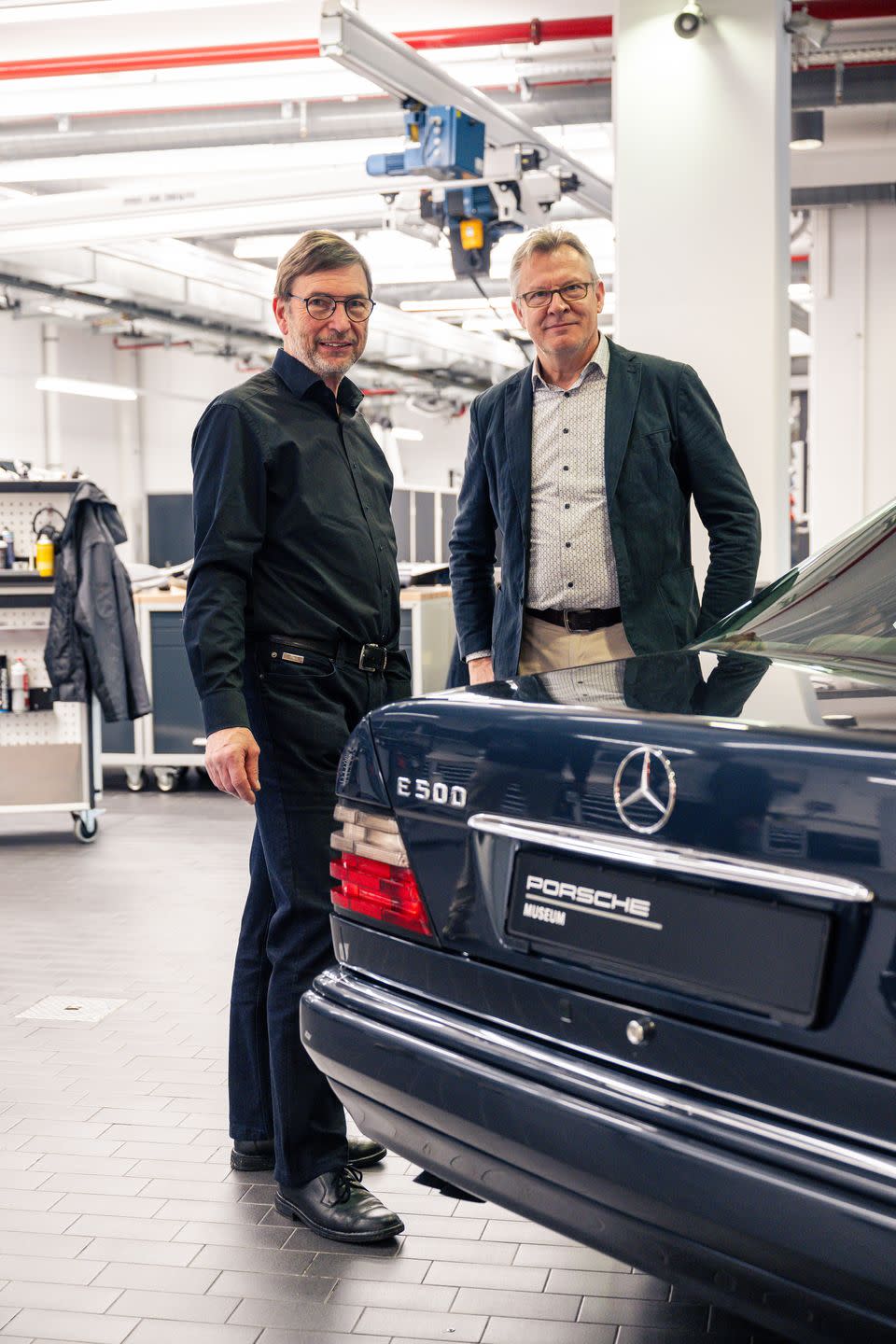
Despite the towering price, $17,370 more than that of the E34 BMW M5, demand started and stayed high. More than 1500 cars came to the U.S. in three years, and the total of 10,479 cars was 30 percent higher than the volumes Porsche had planned for. Production was split by the W124’s face-lift. The 500 got slightly bigger brakes and was rebranded according to Merc’s new naming convention, the E switching from suffix to prefix. These days, 500E and E500 are used pretty much interchangeably.
The 500E’s appeal has grown over the years, with age adding neoclassic allure to the combination of luxury, performance, and understated style. It is easy to see the 500E as the archetypal supersedan that rivals would imitate: Audi, BMW, and Jaguar all followed with V-8 engines and automatic transmissions. It’s no stretch to consider the Cadillac CT5-V Blackwing a spiritual successor. When Mercedes absorbed AMG’s road-car operations a few years later, the 500E (and the W124-based E60 AMG) inspired the generations of 43, 55, and 63 models that came after.
Berghus and Hölscher enjoyed long and successful careers. Berghus worked on the original Mercedes M-class SUV, then on the Maybach 57/62 and the McLaren SLR. Hölscher led the engineering of another famous Porsche collaboration, the Audi RS2, before ultimately working as development manager on the Carrera GT and 918 Spyder. Both remember the 500E project as an unusually harmonious one between two automakers.
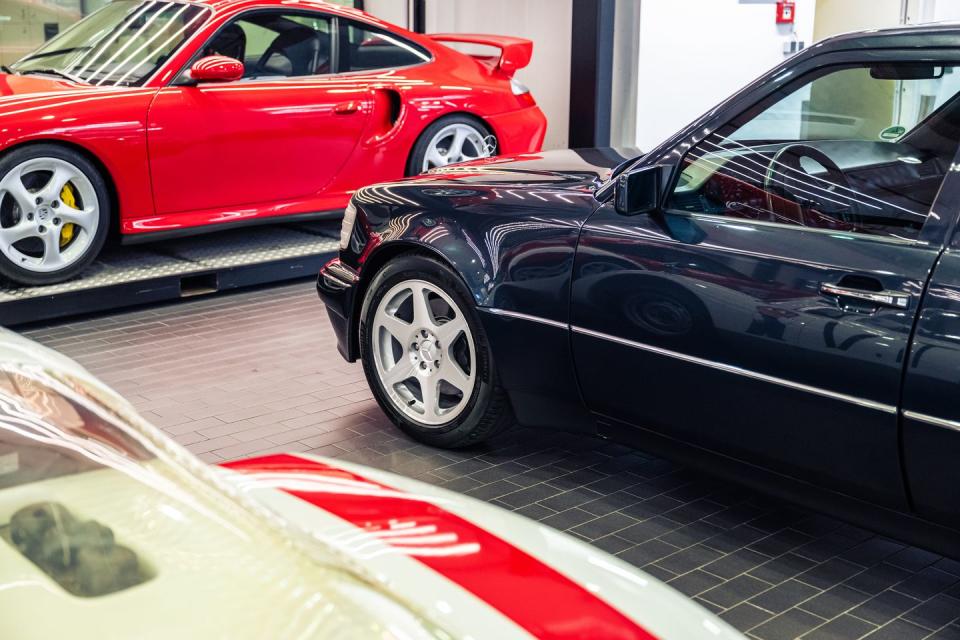
“I knew how special it was when I took a test car for the weekend and drove three friends to Lake Constance,” Hölscher recalls. “The autobahn was not crowded, and they were chatting to each other. Then suddenly it went silent. ‘You’re driving at 250 km/h,’ one of them said. The car was so good that unless you looked at the speedometer, you didn’t feel it.”
“We had a slogan on the project: ‘Cultural sportivity.’ That was what we wanted to create,” Berghus says. “I don’t know if that really makes sense in English.”
Don’t worry. It translates fine.

A car-lover’s community for ultimate access & unrivaled experiences.JOIN NOW Hearst Owned
You Might Also Like

 Yahoo Autos
Yahoo Autos 